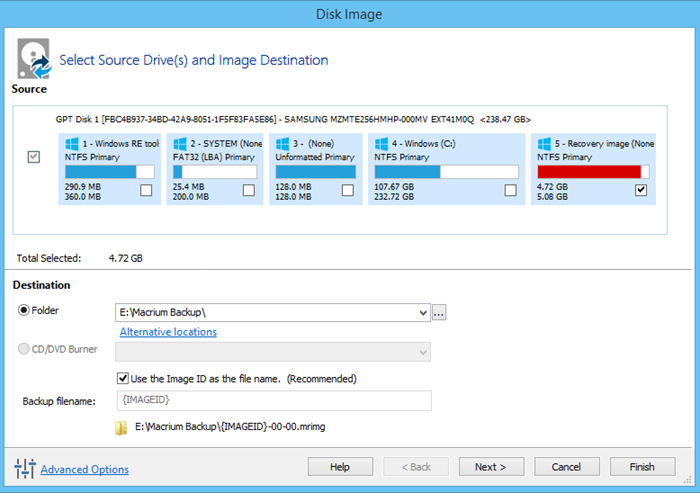Macrium Reflect Free Review
Macrium Reflect is a disk imaging software; it is free, and it is the best if you ask me. The first thing to do after installing a fresh copy of Windows and tuning up programs is install Macrium. It helps me create a snapshot that I can use in the event of a spoiled system drive. As far as the disk drives are the same, Macrium Reflect can help you restore the drives properly. However, if you have changed the drive size or added more drives to the hard disk drive, your new settings will be gone. That much risk is associated with any paid disk imaging program as well. When you go back into time by x number of weeks, you are bound to lose the changes you made to the system in those x weeks. Leaving that aside, here are the reasons why I call Macrium Reflect, the best free disk imaging software:
Setup Confusion
The initial installation screen calls the free version as Free/Trial, making you wonder if you are installing a trialware. But no, it is the free edition of Macrium Reflect so go ahead with the option. The installation is a bit longer if you opt to download and install PE as well. But I recommend that as you would or may need a bootable CD and PE serves that purpose, allowing you to boot to Windows or Linux – according to the operating system you use.
Using Free Macrium Reflect Imaging Software For Windows PC
Macrium Reflect Free offers the following features:
Browse backup contents in Windows ExplorerBoot backups in Hyper-V virtual machineBackup removable flash mediaCreate images of running Windows OSDifferential imagingDirect disk cloningRestore non-booting systems.
Create Restore Media
The first step I recommend is creating a Rescue Media soon after you install Macrium Reflect. From Other Tasks menu, select Create Rescue Media. Select your operating system and click Next. The second screen sounds a little complex as it is for Advanced Users who know how to handle the PE atmosphere. Just click Next with the defaults selected. Before clicking Next, make sure you have an empty CD/DVD in your DVD drive. That disk will be prepared for booting in the future – in case the system drive goes corrupt. NOTE: You may also opt to make it a bootable Pen drive. PE supports booting both from DVD and USB. In case you do not have anything ready, select to create an ISO image that will store to your local disk. You can later use the ISO to create the bootable disk or Pen drive.
Schedule backups
Once you have the restored media, you are all set to schedule backups. You can also go for manual backups. Macrium Reflect will recognize all the disk drives on your computer and present them in an understandable format. To image or clone a drive, select it and click on the link that says Image This Drive or Clone This Drive as required. You can select a Folder to create images that can be used post booting from the Rescue Media. However, using external media is recommended by experts. You can use a Pen Drive or another Hard Disk Drive or even a DVD. I would say use DVD only if the other two options are not available, as DVDs too tend to get corrupted by scratches etc. When creating images, you get to select a compression level and other options including if to shut down the computer after imaging/cloning. And yes, you can also select Reflect – the best free disk imaging software – to image only those sectors on the drive that contain data thereby making the backup file size even smaller.
Macrium Reflect 7 Free Edition includes the following new features:
Integrated viBoot 2: Instant virtualization of Macrium backup images.Task Scheduler 2: For compatibility with Windows 10.Licensed for Commercial Use: Macrium Reflect 7 Free Edition is now licensed for use in a business environment.
You can download it from its home page. In this review of Macrium Reflect, I left out certain features that are easy to understand.

